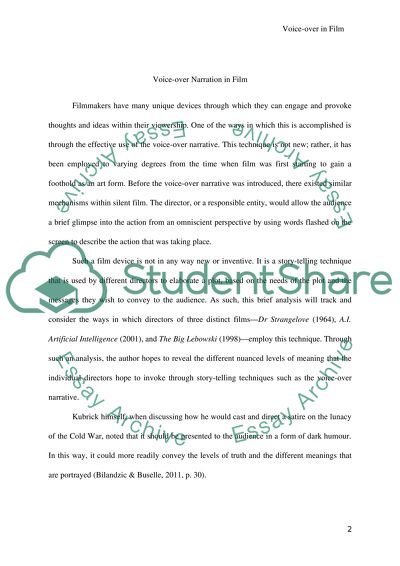Cite this document
(“Compare the role of voice-over narration in any two (or three) films Essay - 1”, n.d.)
Compare the role of voice-over narration in any two (or three) films Essay - 1. Retrieved from https://studentshare.org/visual-arts-film-studies/1461762-compare-the-role-of-voice-over-narration-in-any
Compare the role of voice-over narration in any two (or three) films Essay - 1. Retrieved from https://studentshare.org/visual-arts-film-studies/1461762-compare-the-role-of-voice-over-narration-in-any
(Compare the Role of Voice-over Narration in Any Two (or Three) Films Essay - 1)
Compare the Role of Voice-over Narration in Any Two (or Three) Films Essay - 1. https://studentshare.org/visual-arts-film-studies/1461762-compare-the-role-of-voice-over-narration-in-any.
Compare the Role of Voice-over Narration in Any Two (or Three) Films Essay - 1. https://studentshare.org/visual-arts-film-studies/1461762-compare-the-role-of-voice-over-narration-in-any.
“Compare the Role of Voice-over Narration in Any Two (or Three) Films Essay - 1”, n.d. https://studentshare.org/visual-arts-film-studies/1461762-compare-the-role-of-voice-over-narration-in-any.


